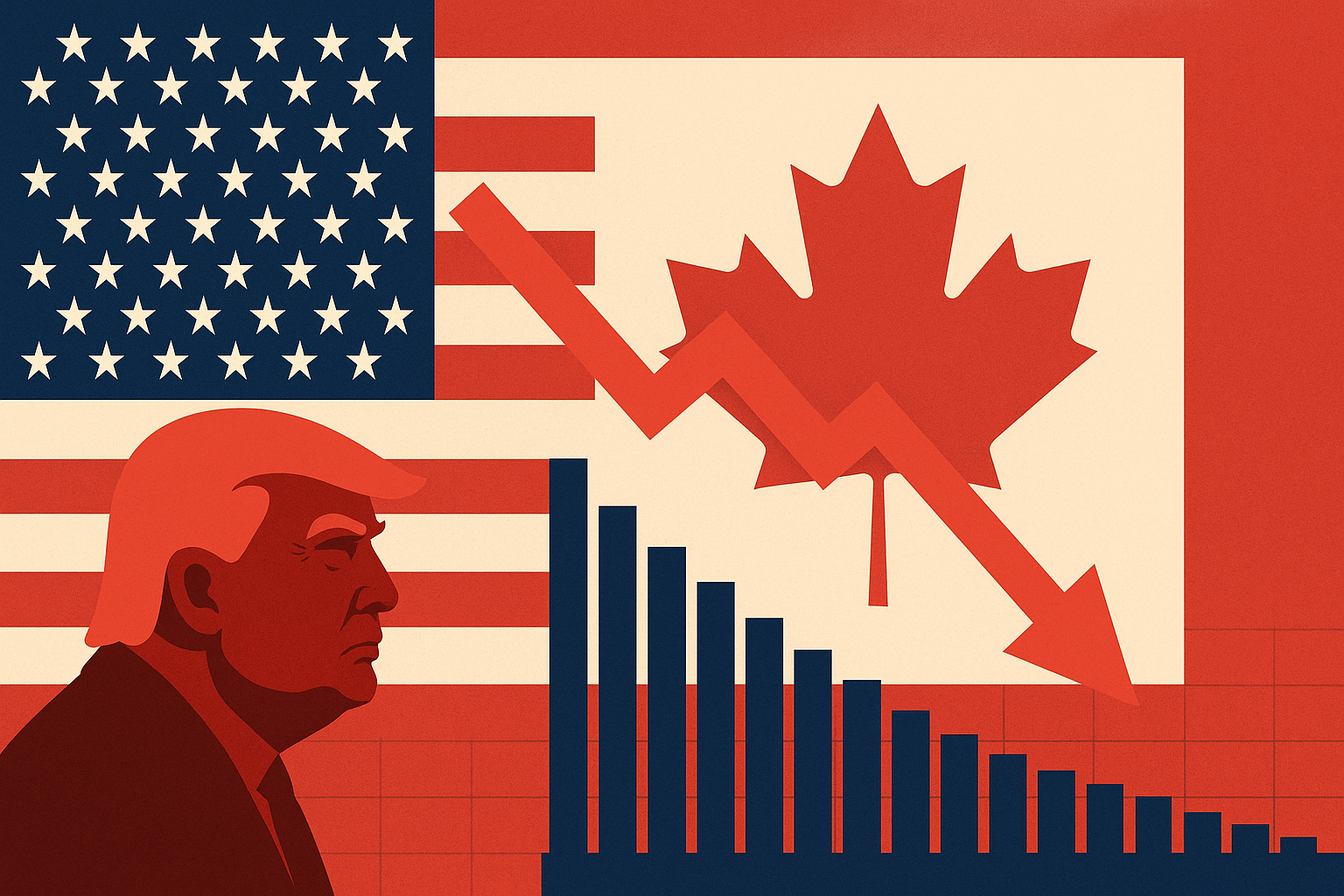U.S. and Canadian markets jolted on Thursday morning following President Trump’s unexpected executive order imposing a sweeping 35% tariff on Canadian imports not covered under the USMCA, effective August 7. In the hours after the announcement, futures for both the S&P 500 and S&P/TSX Composite Index slid, with TSX futures falling nearly 1%, according to Reuters.
This move marks the latest escalation in trade friction that’s catching global investors off guard. The timing—just ahead of the closely watched U.S. Non-Farm Payrolls report—adds another layer of uncertainty to already volatile markets. For portfolio managers and retail investors alike, reassessing exposure to trade-sensitive sectors is now top of mind.
U.S.–Canada Trade: A Shifting Landscape
The newly announced tariffs target a broad array of Canadian exports, including softwood lumber, auto parts, industrial machinery, and select agricultural goods—many of which had previously benefitted from cross-border trade protections.
While the White House claimed the move was meant to “restore reciprocity and protect American industry,” critics on both sides of the border warn it could strain bilateral trade valued at over $700 billion annually. According to the Office of the United States Trade Representative (USTR), Canada is the largest U.S. trading partner by goods value, underscoring the ripple effect this policy shift could trigger across industries.
In a press briefing, White House officials suggested this action responds to Canada’s “unfair subsidies in timber and agricultural sectors,” an assertion Ottawa denies. Canadian Trade Minister Mélanie Joly responded swiftly, stating that “Canada will defend its industries and workers with all available tools.”
Why This Matters for Investors
Markets dislike surprises—and this one wasn’t priced in. Industrials, automakers, and resource stocks were hit first, with names like Magna International (TSX: MG) and West Fraser Timber (TSX: WFG) experiencing early morning pressure. The S&P 500’s Materials and Industrials sectors saw weakness in pre-market trading.
Meanwhile, safe-haven assets like U.S. Treasuries and gold saw minor inflows, suggesting investors are already rotating toward defensive and domestically-focused positions.
“Any time we see these abrupt changes in cross-border trade terms, it introduces execution risk for companies dependent on complex supply chains,” said Morgan Wilkins, senior macro strategist at RBC Capital Markets. “Investors will need to reevaluate earnings expectations for Q3, especially for multinationals operating in North America.”
Future Trends to Watch
- Retaliation Risk: Ottawa hinted at proportional countermeasures. A full-scale tariff standoff could extend volatility through Q3.
- Supply Chain Reconfiguration: Expect North American manufacturers to fast-track reshoring strategies or pivot sourcing to avoid tariff-heavy categories.
- Inflation Watch: With trade barriers rising, the cost of goods could increase, impacting both PPI and CPI in the coming months—likely influencing Fed policy.
- Political Risk Premium: With the 2026 midterm cycle heating up, policy unpredictability under the Trump administration could elevate volatility across cyclical assets.
Key Investment Insight
In the near term, investors should consider reducing exposure to trade-exposed sectors—particularly Canadian equities in lumber, autos, and manufacturing—and look toward domestically oriented U.S. companies in utilities, healthcare, and consumer staples. Additionally, gold and infrastructure ETFs may serve as hedges against both political and inflationary risk.
Longer-term opportunities may arise in supply chain automation, reshoring infrastructure, and North American rare earth and battery supply chains, sectors that could benefit from a realignment of trade priorities.
Stay ahead of market shifts by following MoneyNews.Today—your trusted source for credible, fast-moving financial and investor news. Whether it’s politics, policy, or performance, we connect the dots so you can invest with confidence.





